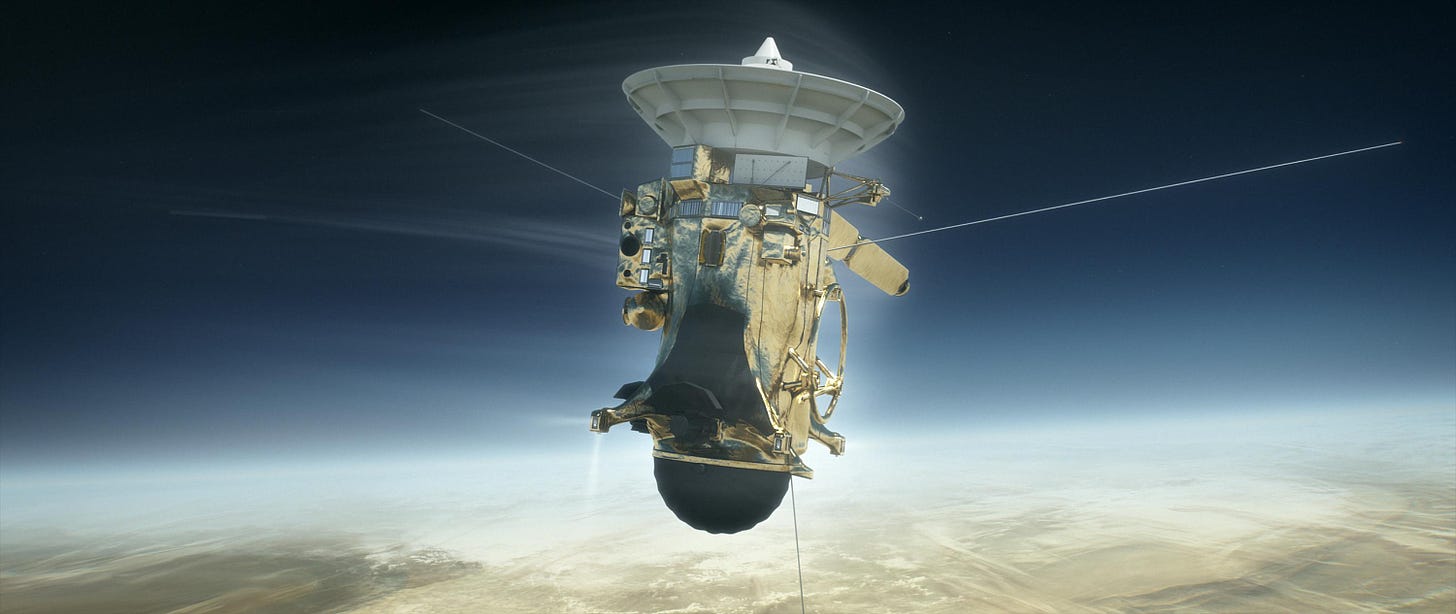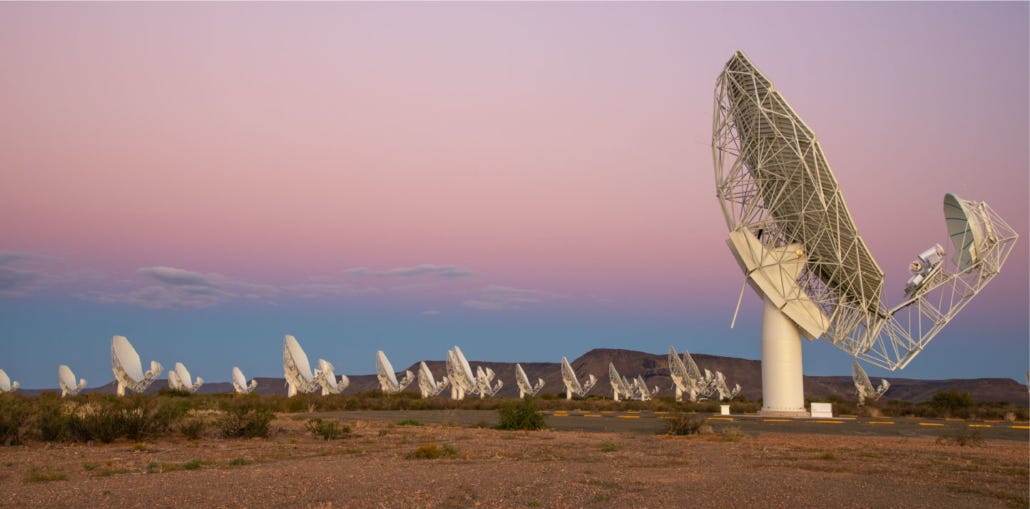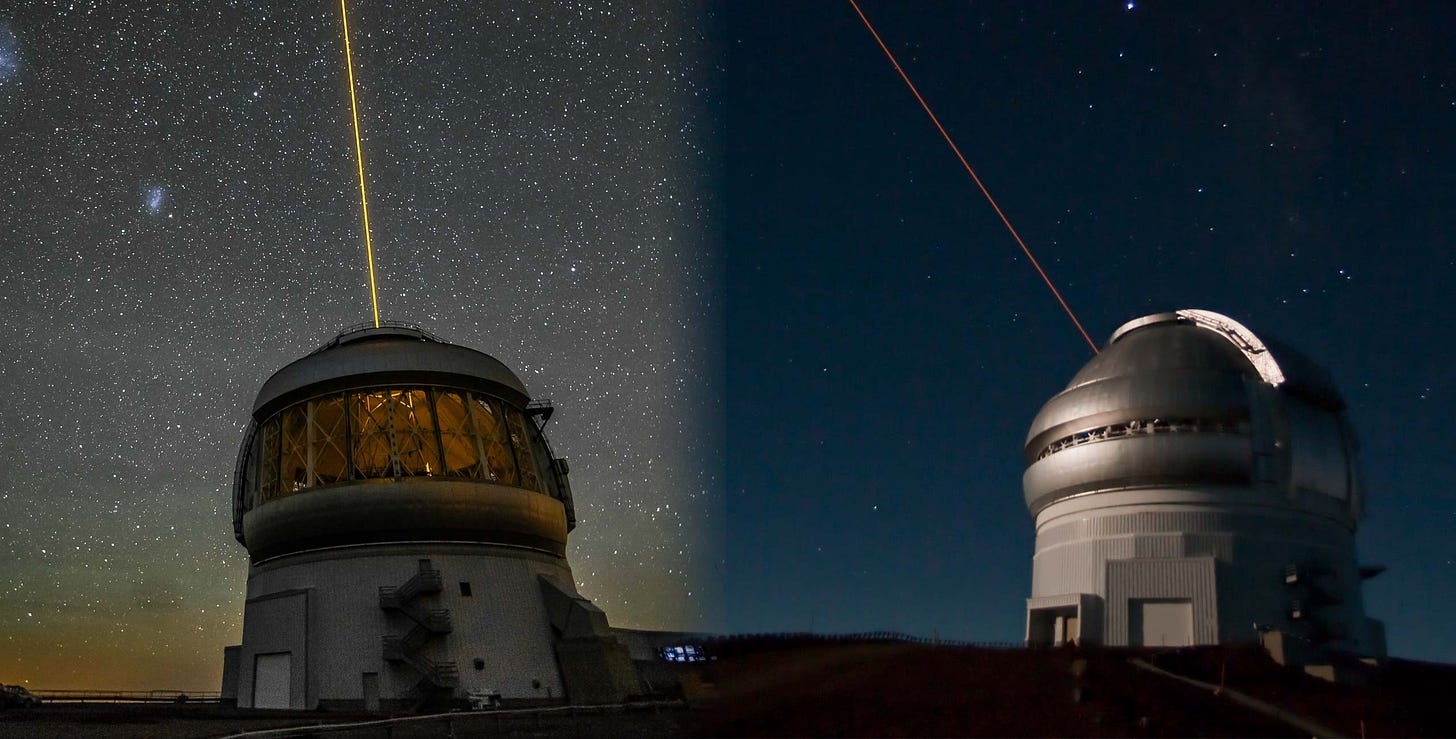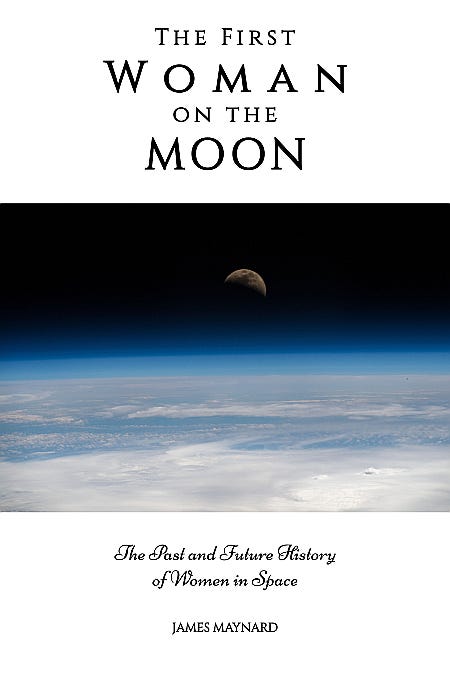The Cosmic Companion September 14, 2019
Galactic Bubbles, Explosions on Titan, Water on a Potentially Habitable Exoplanet, and a Comet from Another Solar System!
Hello Everyone:
I’m back from vacation, visiting the Grand Canyon, as well as Meteor Crater and Lowell Observatory!
There were lots of amazing stories in astronomy this week, including giant bubbles of gas, signs of explosions on Titan, water found on a potentially habitable exoplanet, and a comet visiting our solar system from another stellar family.
Let’s take off!
The Week in Space
Explosions on Titan Could Answer Mystery

The Cassini spacecraft, imagined as it plummeted into the atmosphere of Saturn on September 15, 2017. Image credit: NASA
Titan is one of the most unique worlds in our Solar System, with an atmosphere thicker than that on Earth, mighty lakes of hydrocarbons near its poles, and sheer rock faces, some reaching hundreds of feet above the surface of the alien moon.
The lakes of Titan are thought to form as liquid methane dissolves a bedrock of solid organic compounds and ice, forming reservoirs which fill with liquid hydrocarbons. This process is thought to be similar to the chain of events which form karstic lakes within limestone deposits on Earth. On both worlds, these formations are marked by sharp boundaries of surrounding material.
Read more: http://bit.ly/Explosions-on-Titan
Water Found on Habitable Planet for First Time

An artist’s concept of K2-18b in its solar system. Image credit: ESA/Hubble, M. Kornmesser
The exoplanet K2–18b resides in the habitable zone around its star, where temperatures are just right for liquid water to pool on the surface of worlds. This distance, where temperatures are warm enough to melt ice, but not hot enough to boil away seas, is sometimes referred to as the Goldilocks Zone.
Now, an international team of astronomers have discovered water in the atmosphere of K2–18b. This marks the first time that water has been detected on an exoplanet orbiting in the habitable zone around its star.
Read more: http://bit.ly/Water-Habitable-Planet-K2-18b
Is Our Galactic Black Hole Blowing Bubbles?

The MeerKAT network of radio telescopes in South Africa. Image credit: SKA South Africa
A pair of enormous gas bubbles have been discovered on either side of our home galaxy by astronomers working with a new network of radio telescopes. These structures are among the largest objects ever seen near the center of the Milky Way.
The bubbles, composed of thin deposits of hydrogen gas, stretch hundreds of light years in length. The barbell-like pair may be the result of a massive burst of energy near the core of our galaxy a few million years ago, but the root cause of that event remains a mystery.
Read more: http://bit.ly/Galactic-Bubbles
Features exclusive interview with Farhad Yusef-Zadeh of Northwestern University!
Comet Visits from Outside Our Solar System

A montage of the twin telescopes — Gemini South on the summit of Cerro Pachón in Chile (left) and Gemini North on the summit of Mauna Kea in Hawai’i (right). Image credit: Gemini/NSF/AURA
For just the second time, astronomers have found an object visiting our family of planets from beyond the solar system. This object, C/2019 Q4 (Borisov), is also the first interstellar comet ever known to visit our family of planets.
The discovery was made on the night of September 9–10, using the Gemini Multi-Object Spectrograph (GMOS) on the Gemini North Telescope, located on Maunakea in Hawaii.
Read more: http://bit.ly/Comet-C2019Q4

Coming soon: The First Woman on the Moon: The Past and Future History of Women in Space by James Maynard
Thanks for reading! If you want to keep up with the latest updates and news about astronomy and space exploration, visit www.thecosmiccompanion.com, join our Facebook page, and follow @TheCosmicCompanion on Instagram and @CompanionCosmic on Twitter.
Do you know someone else who would love this newsletter? Please share!
To Infinity and Beyond!
- James


